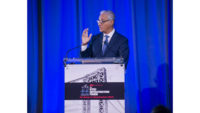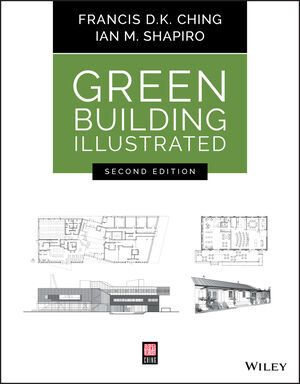Big Usage Gaps Exist Between Building Energy Models and Performance

Green does not necessarily mean energy-efficient. "A lot of people think it does," said consulting engineer Lawrence G. Spielvogel at the ASHRAE winter conference last month. The veteran mechanical engineer then charged that the long-used energy standard for commercial building systems, ASHRAE 90.1, "provides and requires a variety of means to waste energy efficiently, which is why so many 'green' buildings have high energy use."
Among many things, Spielvogel—a known gadfly—blames code-required control systems for waste. "Good mechanical engineers do not know controls, good control technicians do not know mechanical systems, good programmers do not know a thing about either, and no one has the time to correct the problem," he said at the Chicago meeting, held Jan. 21-26. "Better automation leads to more sophisticated processes, which lead to more opportunities for error," he added.
Another mechanical engineer, who opted for anonymity, agreed: "It's getting a lot harder to comply with codes."
Spielvogel, head of his eponymous firm based in Bala Cynwd, Pa., maintains that, often, buildings do not perform as modeled. He offered several examples, including the Pennsylvania Dept. of Environmental Protection's Cambria Office Building in Ebensburg. The design claimed the 12-year-old building would use 25,000 Btu per sq ft per year. Spielvogel showed electric bills for the second year that indicated the building purchased 423,120 kWh, which translates to 41,900 Btu per sq ft per year, he said.
The Adam Joseph Lewis Center for Environmental Studies at Oberlin College in Oberlin, Ohio, was designed for net-zero energy use, said Spielvogel. In its second year, the building used 124,475 kWh from the utility and 59,166 kWh of solar electricity. That translates to 46,000 Btu per sq ft per year, he said. Claims of net-energy export after the school added a $1-million solar array are now being refuted based on meter data, said Spielvogel. The building cost $535 per sq ft in 1998, with design fees and expenses costing $125 per sq ft, he added.
A few attendees took exception to Spielvogel's comments. "We cannot go back to making 'dumb' buildings," said one. "We cannot count only on professional expertise" and not take advantage of energy modeling software, he added.
ASHRAE, formerly known as the American Society for Heating, Refrigerating and Air-Conditioning Engineers Inc., does not deny problems with building performance. "We as an industry just have to be able to deliver and maintain buildings that meet the promises we made for their performance as well as the expectation of the owners," said Ron Jarnagin, a staff scientist at the Pacific Northwest National Laboratory, Richland, Wash., and ASHRAE's 2011-12 president. "We are not there yet. If we were, we wouldn't have buildings not performing according to their capabilities," he added.
Om Taneja, the U.S. General Services Administration's Manhattan Service Center director, said there is 5% to 20% in potential savings on energy bills without significant capital investment. One way is to manage plug loads. Another is to train operators. GSA currently requires operator training and ASHRAE certification.
Design liability for systems that underperform is a concern. Insurers will defend claims related to innovation but won't pay them. "Be careful," said lawyer Steven Charney, chairman of Peckar & Abramson, New York City.
Practitioners, who requested anonymity, burst several other myths about green systems: ground-source heat pumps, chilled beams and radiant floors don't work as well as claimed. Underfloor air supply is too expensive and not better than conventional systems.
"Nobody wants to admit something doesn't work so we can learn from mistakes and move on," said Spielvogel. "At ASHRAE, we used to share our war stories and publish them. That stopped about 20 years ago because of fears of getting sued."






